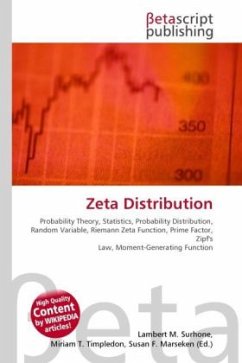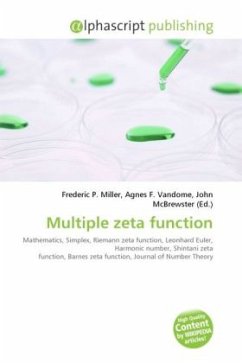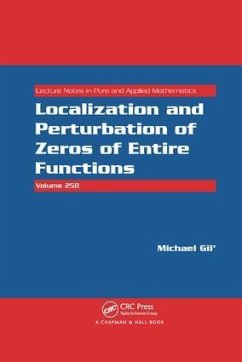
Prime Zeta Function
Versandkostenfrei!
Versandfertig in 6-10 Tagen
23,99 €
inkl. MwSt.

PAYBACK Punkte
12 °P sammeln!
High Quality Content by WIKIPEDIA articles! In mathematics, the Prime zeta function is an analogue of the Riemann zeta function, studied by Glaisher (1891). It is defined as the following infinite series, which converges for Re(s) 1: P(s)=sum_{p,inmathrm{,primes}} frac{1}{p^s}. The Euler product for the Riemann zeta function (s) implies that logzeta(s)=sum_{n0} frac{P(ns)}{n}, which by Möbius inversion gives. P(s)=sum_{n0} mu(n)frac{logzeta(ns)}{n}. This gives the continuation of P(s) to Re(s) 0, with an infinite number of logarithmic singularities at points where ns is a pole or zero of (s)....
High Quality Content by WIKIPEDIA articles! In mathematics, the Prime zeta function is an analogue of the Riemann zeta function, studied by Glaisher (1891). It is defined as the following infinite series, which converges for Re(s) 1: P(s)=sum_{p,inmathrm{,primes}} frac{1}{p^s}. The Euler product for the Riemann zeta function (s) implies that logzeta(s)=sum_{n0} frac{P(ns)}{n}, which by Möbius inversion gives. P(s)=sum_{n0} mu(n)frac{logzeta(ns)}{n}. This gives the continuation of P(s) to Re(s) 0, with an infinite number of logarithmic singularities at points where ns is a pole or zero of (s). The line Re(s) = 0 is a natural boundary as the singularities cluster near all points of this line.












